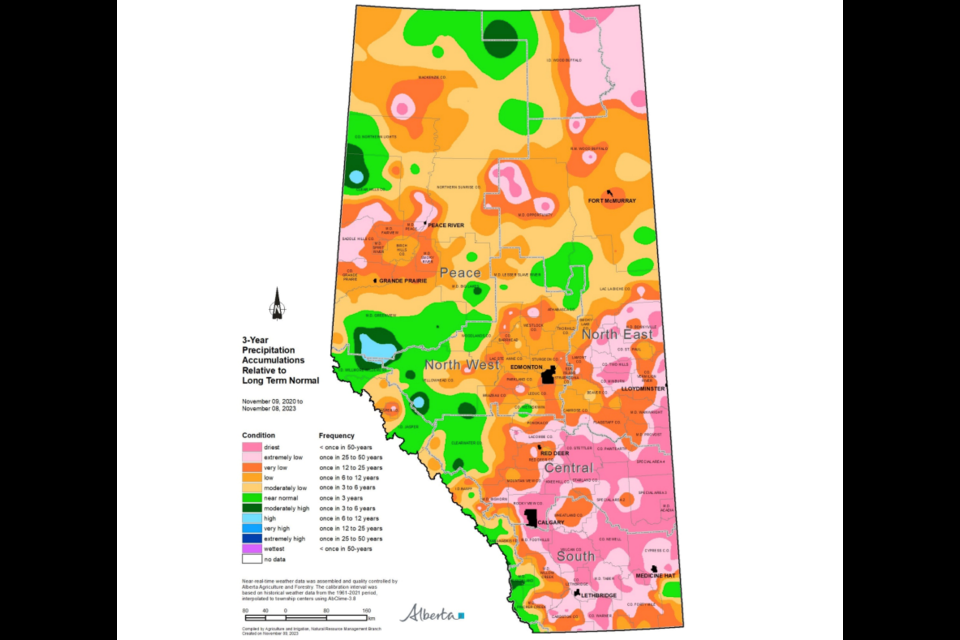Much of Alberta has been hit by abnormally dry conditions in the last three years, and dozens of agricultural regions were stricken by severe drought. With El Niño expected to bring a warmer, drier winter to the Prairies, water is expected to be a top issue municipalities and governments will be grappling with next year.
"We've been talking to our members and I think 2024 is shaping up to be about water, and forest fire too. Our members feel it," Rural Municipalities of Alberta (RMA) president Paul McLaughlin said during a ministerial forum at an RMA conference on Nov. 9.
"This is potentially a very serious issue for next year. We saw a very severe drought this year, and if we have a warm, dry winter, like is expected, we know that we will be in a very serious situation next year as well," said Rebecca Schulz, minister of environment and protected areas.
Schulz said her department is currently collecting information and doing engagements with municipalities and irrigation districts to develop plans for drought and emergency management. The government will also be looking at "big picture" water management issues in the province like incentivizing water conservation and water infrastructure plans, she said.
Alberta's agricultural areas have been running long-term moisture deficits over the last three years, according to the agriculture and irrigation ministry.
"Most of the Southern, Central and parts of the North East Regions are estimated to have a three-year period, in aggregate, this dry less than once in 50 years," the agricultural moisture situation update said. For the special areas region and adjacent parts of southern Alberta, the moisture deficit is equivalent to losing an entire year of precipitation in the last three years.
Among the many audience members who voiced concerns about drought and water management during the ministerial Q & A was Tony Bruder, a councillor from the Municipal District of Pincher Creek, which has been under an extreme water restriction since Aug. 16. Bruder said his M.D. has had to haul in water for its hamlets and villages, at a cost of up to $8,000 per day.
RJ Sigurdson, minister of agriculture and irrigation, said there will likely be declines in water levels in reservoirs across the province next year, not just at the Oldman Dam that Pincher Creek relies on, and that the province will need a "very strategic plan" to deal with the water deficits.
"We need to be proactive next year," Sigurdson said, with the understanding that there will be less water in reserves than there was this season and the province will have to act on water conservation.
"It's going to be critical. Not just for municipalities, but it's definitely going to be critical for agriculture as well," he said.
As of early October, 21 communities in Alberta had declared agricultural disasters because of dry conditions in 2023. The majority of affected communities were in southern parts of the province.



